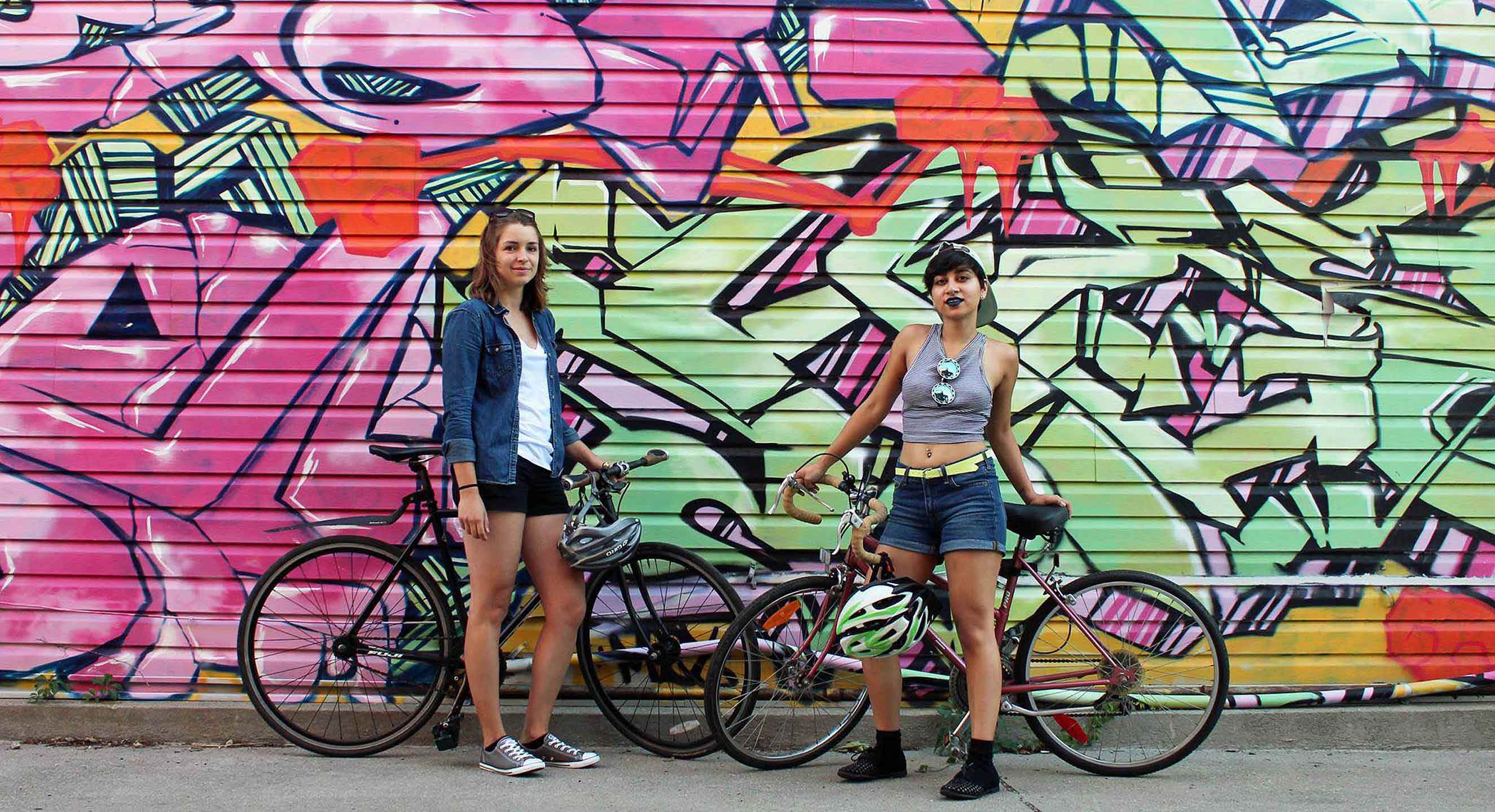By Nicole Brumley
While creating a cycle culture continues to be a vision for Toronto, a recent Ryerson report points to a gender divide in ridership in the Greater Toronto and Hamilton Area.
The report, titled Cycling Behaviour and Potential in the Greater Toronto and Hamilton Area, states that cities should focus their efforts on getting more women to bike in order to increase overall cycling potential.
According to the study, women make up less than 30 per cent of cyclists in the GTAH. The same study showed that more than half the trips (54 per cent) taken by women could be biked, in comparison to 46 per cent for men.
Raktim Mitra, a Ryerson Urban and Regional Planning professor and lead investigator of the study, said there’s a “huge gap” when it comes to women ridership possibilities. At Ryerson, 54 per cent of students and 50 per cent of employees are women.
Mitra said potential factors that reduce female ridership could be because women are typically more risk averse than men, and are more likely to face aggressive behaviour or abuse while biking.
Lavinia Tanzim, a third-year creative industries student and avid cyclist, said one of the concerns she hears most often is that cycling in the city is intimidating.
“Additionally, sometimes men in the cycling community don’t take you seriously or look down on you because you’re a woman,” said Tanzim via messenger.
Other students echo similar concerns about safety. Ryerson creative industries student Emily Skublics was biking along Dundas Street and University Avenue when she encountered an all too familiar problem faced by cyclists in the downtown core. As traffic approached a red light, Skublics was biking up to the intersection when a passenger in a stopped car swung their door open, nearly slamming into her.
“Luckily I was going slowly, but she was less than a foot away from me … I actually screamed at her to be careful and she didn’t even look at me,” said Skublics. “The demeaning feeling is when big almost-accidents happen and I want to scream, ‘I’m a person!’ because drivers and pedestrians treat me like a nuisance instead of a person on a vehicle.”
Biking along Spadina to Dundas is a necessary route for Skublic’s to get to Ryerson’s campus. She said it’s because of a lack of bike lanes, causing her to get “cut-off or nearly doored almost every day.”
Recent statistics from the Toronto Police show that over 1,083 cyclists and pedestrians have been hit by cars since June 1, 2016. From 2008-2012, 10 cyclists died in Toronto from their injuries.
Amy Harris is a Ryerson instructor who studied Urban and Regional Planning and Geography Literature at Queen’s University.
Harris has been a regular cyclist in the city for 14 years and said the recent police statistics show an “intolerable carnage.”
“The thing that concerns me is not just the death toll—it is the victim-blaming. People run down by cars are blamed, even though these collisions occur because drivers are inattentive … angry, and because too many drivers fail to think about what happens when their hard, heavy vehicles impact soft human bodies,” said Harris.
While on campus, cyclists run into other issues, like finding safe, available spaces to lock their bikes.
Harris said theft of bikes and bike parts remains “a very real problem” on campus, and that she would love to see Ryerson double the number of bike racks and move existing parking to more visible and secure locations.
While Ryerson does offer a bike room on Bond Street, access to the facility is based on a first-come-first serve basis and is not actively monitored or patrolled.
“I often teach at night, meaning that I must unlock my bike in dark, out-of-the-way locations on campus late at night. I had a pass to the bike room last year but was never able to use it because it is in a dark alley and the room did not feel like a safe space at night,” said Harris.
Colleen Filson, a fourth-year creative industries student, has been biking to campus for over two years. Filson is now on her second bike after her previous 1975 vintage bicycle was stolen near the Rogers Communications Centre.
Filson said finding bike parking in safer areas like Balzac’s and the Student Learning Centre (SLC) is sometimes difficult due to overcrowding.
“The weird, upright bike lock stations in front of the library entrance are … really dumb. Most people can only lock tires, which is a huge reason bikes gets stolen because tires can be easily detached from bikes,” said Filson.
Micheal Forbes, an interim group director and Ryerson spokesperson, said he has been made “generically” aware of bike theft and a lack of bike lock spaces on campus. Forbes said students can expect to see a significant increase in bike spaces near Church and Dundas sreets after the completion of the Daphne Cockwell Health Sciences Complex in Fall 2018.
The new building will serve as a multi-functional hub, offering over 100 bike spaces inside, as well as available parking around the area.
Tanzim and fourth-year journalism student Claire McFarlane started the Bad Girls Bike Club in July to try and get more women on their bikes.
The Bad Girls Bike Club offers maintenance workshops and guided rides in the city “to empower women to become self-sufficient cyclists.”
Tanzim said her advice to women biking downtown is to “be aware of the rules of the road, be visible and be predictable.”











Leave a Reply